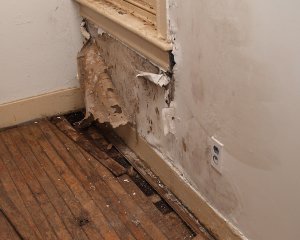We have stumbled upon this post on Most Common Causes of Leaky Pipes down the page on the internet and think it made sense to talk about it with you over here.

Leaks not only trigger waste of water yet can also cause unnecessary damages to your home and promote unwanted organic development. By comprehending and also looking for everyday scenarios that trigger leakages, you can secure your home from future leakages and unneeded damages.
Intruding roots
A lot of water leakages start outside the house rather than inside it. You could see wet spots or sinkholes in your yard, and that might mean that tree roots are getting into water lines triggering water to permeate out.
Rusty water supply
This might be the reason of discoloration or bending on your water pipes. If our plumbing system is old, think about changing the pipes because they are at a higher danger of corrosion than the more recent versions.
Faulty Pipe Joints
The factor at which your pipes attach is regularly the weakest link in the waterline. Pipe joints can weaken in time, causing water leaks. The bulk of pipeline joints are not conveniently visible. If you have loud pipes that make ticking or banging noises, particularly when the hot water is turned on, your pipeline joints are possibly under a lot of pressure. It is advisable to have your plumber inspect your system once a year.
Instant temperature level changes.
Extreme temperature adjustments in our pipes can create them to expand and contract all of a sudden. This development and also tightening might create cracks in the pipelines, specifically if the temperature level are below cold.
Poor Water Connectors
At times, a leakage can be triggered by loosened hose pipes and pipelines that provide your home appliances. In situation of a water connections leak, you might observe water running directly from the supply line or pools around your home appliances.
Obstructed Drains
Blocked drains might be irritating and also inconveniencing, however they can often wind up triggering an overflow resulting in break pipes. Keep getting rid of any type of materials that may decrease your drains pipes that might obstruct them to avoid such aggravations.
All the above are reasons for leakages but not all water leakages arise from plumbing leaks; some leaks might come from roofing leaks. All leaks must be repaired immediately to avoid water damage.
Leaks not only create waste of water but can likewise create unneeded damage to your house as well as advertise undesirable natural development. By recognizing as well as looking for everyday scenarios that cause leaks, you can safeguard your house from future leakages and also unnecessary damage. Today, we will look at six leakage causes that might be triggering your pipelines to leak.
At times, a leakage can be caused by loose hoses and pipelines that provide your appliances. In case of a water links leak, you may discover water running straight from the supply line or puddles around your home appliances.
How To Check For Water Leak In Your Home
How To Check for Leaks
The average household's leaks can account for nearly 10,000 gallons of water wasted every year and ten percent of homes have leaks that waste 90 gallons or more per day. Common types of leaks found in the home are worn toilet flappers, dripping faucets, and other leaking valves. These types of leaks are often easy to fix, requiring only a few tools and hardware that can pay for themselves in water savings. Fixing easily corrected household water leaks can save homeowners about 10 percent on their water bills.
To check for leaks in your home, you first need to determine whether you're wasting water and then identify the source of the leak. Here are some tips for finding leaks:
Take a look at your water usage during a colder month, such as January or February. If a family of four exceeds 12,000 gallons per month, there are serious leaks.
Check your water meter before and after a two-hour period when no water is being used. If the meter changes at all, you probably have a leak.
Identify toilet leaks by placing a drop of food coloring in the toilet tank. If any color shows up in the bowl after 10 minutes, you have a leak. (Be sure to flush immediately after the experiment to avoid staining the tank.)
Examine faucet gaskets and pipe fittings for any water on the outside of the pipe to check for surface leaks.
Undetected water leaks can happen without the home or business owner even realizing. If you suspect a water leak, but not able to find the source. It is time to contact a professional water leak detection service, The Leak Doctor.
How To Find a Water Leak In Your Home
https://www.leakdoctor.com/blog/How-To-Check-For-Water-Leak-In-Your-Home_AE197.html

I was shown that report on How to Find Water Leaks from an associate on our other website. Sharing is caring. One never knows, you will be helping someone out. Kudos for your time. Visit us again soon.
Visit My Website